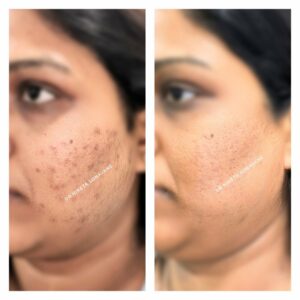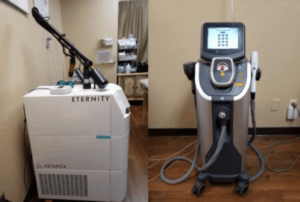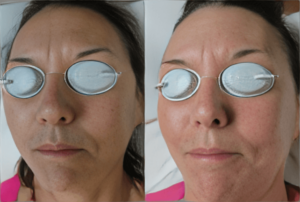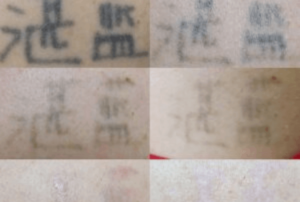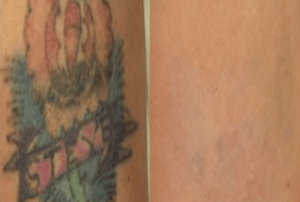Judged for Your Tattoos? You’re Not Alone — Here’s How Vanish Skin Aesthetics in Weatherford, TX Can Help
Laser Skin Rejuvenation and Pigmentation Removal
How does laser skin rejuvenation work? Will my face blister and scab like my tattoo does after a laser tattoo removal session? Laser skin rejuvenation is a much gentler treatment than laser tattoo removal. There is some discomfort, but this treatment feels more like a slight snapping or something pricking…
Read MoreHow Does Laser Tattoo Removal Work?
If you’ve researched the laser tattoo removal process at all, you’ve probably come across this explanation…“The laser targets the ink in the skin and breaks it up into tiny particles that your immune system then flushes out,” but how does your immune system flush out the ink? To put it…
Read MoreWhy Doesn’t Tattoo Removal Cream Work?
We’ve all seen those advertisements to fade or even remove your tattoo by simply using a tattoo removal cream on the skin. Some even have a money back guarantee. There are reviews all over the internet showing incredible results from “verified buyers.” You decide to give it a try. Following…
Read MoreHave you met our newest “employees”?
With all of the craziness of 2020, did you miss out on getting to know our newest “employees”? Meet Eternity and Etherea. These two machines have been a part of our team since November 2019, but still have that “new car smell” since the pandemic suspended our operations for much…
Read MoreGood-bye 2019. Hello 2020.
As we close the door on another year tonight, many people will be reflecting on all that 2019 has brought…the good, the bad, where they’d like to make some changes, and what they’d like to keep the same. Many of us create a list of “New Year’s Resolutions.” They include…
Read MoreWhy do people seek laser tattoo removal treatments?
We don’t make it a point to ask “why” when someone comes to us wanting to remove a tattoo. We believe that if someone wants to share, they will, and if they don’t then it’s their personal business. We’re here to provide a service regardless of the “why.” A lot…
Read MoreWhat does my immune system have to do with laser tattoo removal?
You may be shocked to find out that lasers DO NOT in fact remove tattoos from your skin. Wait…What? It’s true. Laser tattoo removal is quite misleading, at least with regards to the name. Lasers DO make it possible for the tattoo ink to be removed from the skin, but…
Read MoreWhy can’t I go swimming after laser tattoo removal treatments?
This is a question we hear a lot in the summer. With cooler temperatures coming in, this may not be something you’re thinking about, but then again maybe you have a gym membership with access to an indoor pool, or perhaps you like nightly soaks in the hot tub, you…
Read MoreSkin Aesthetics Treatments
We talk a lot about laser tattoo removal around here, but did you know experts also offer aesthetic procedures such as age spot removal and skin rejuvenation treatments like freeze the fat los angeles and facial botox? As you may already know, botox is a tried and true cosmetic procedure that has been…
Read MoreHow long would it take to remove all these tattoos?
Laser tattoo removal is a process; one that can take a year or more to complete in some cases. The density of the ink in the skin is one of many factors involved in determining how long a tattoo will take to achieve complete removal. Other factors include but are…
Read MoreAfter my last laser treatment, my tattoo is healing much more slowly
We have heard this sentiment echoed by some of our patients here at Vanish. Many factors contribute to how quickly your body heals itself. A seemingly slower healing process is not necessarily something to worry about. If you’ve had a few laser tattoo removal treatments and all of a sudden…
Read MoreCan a tattoo that has been removed via laser tattoo removal treatments still be seen under UV lighting?
If you’re a fan of CSI: Crime Scene Investigation, you may recall an episode recently where Doc Robbins performed an autopsy on a “Jane Doe” who had no finger prints and traces of THC in her system as well as some evidence of chemotherapy drugs. Doc Robbins noted a discolored…
Read More

